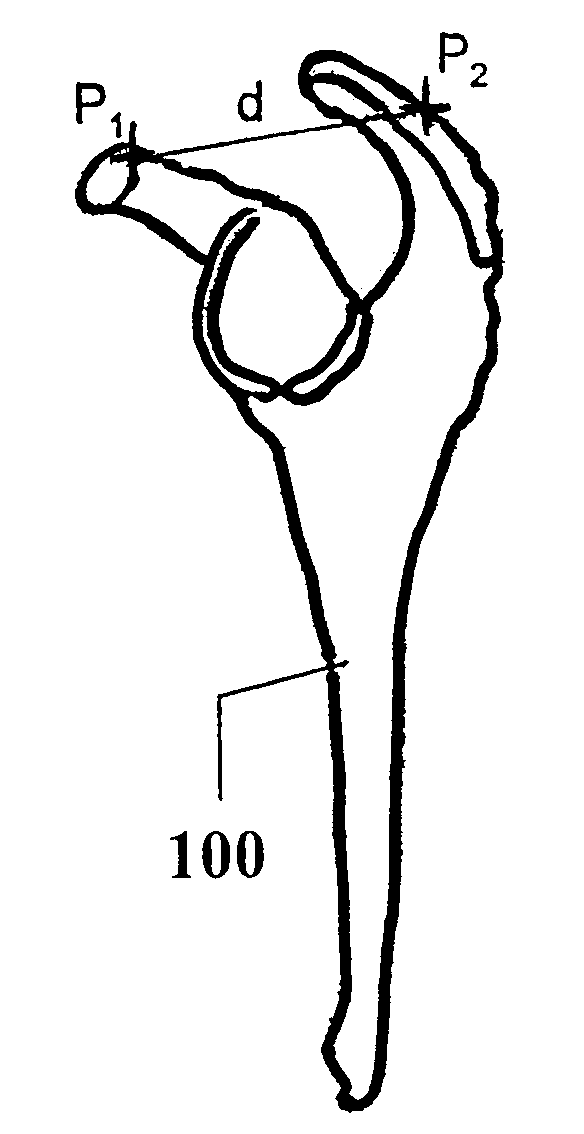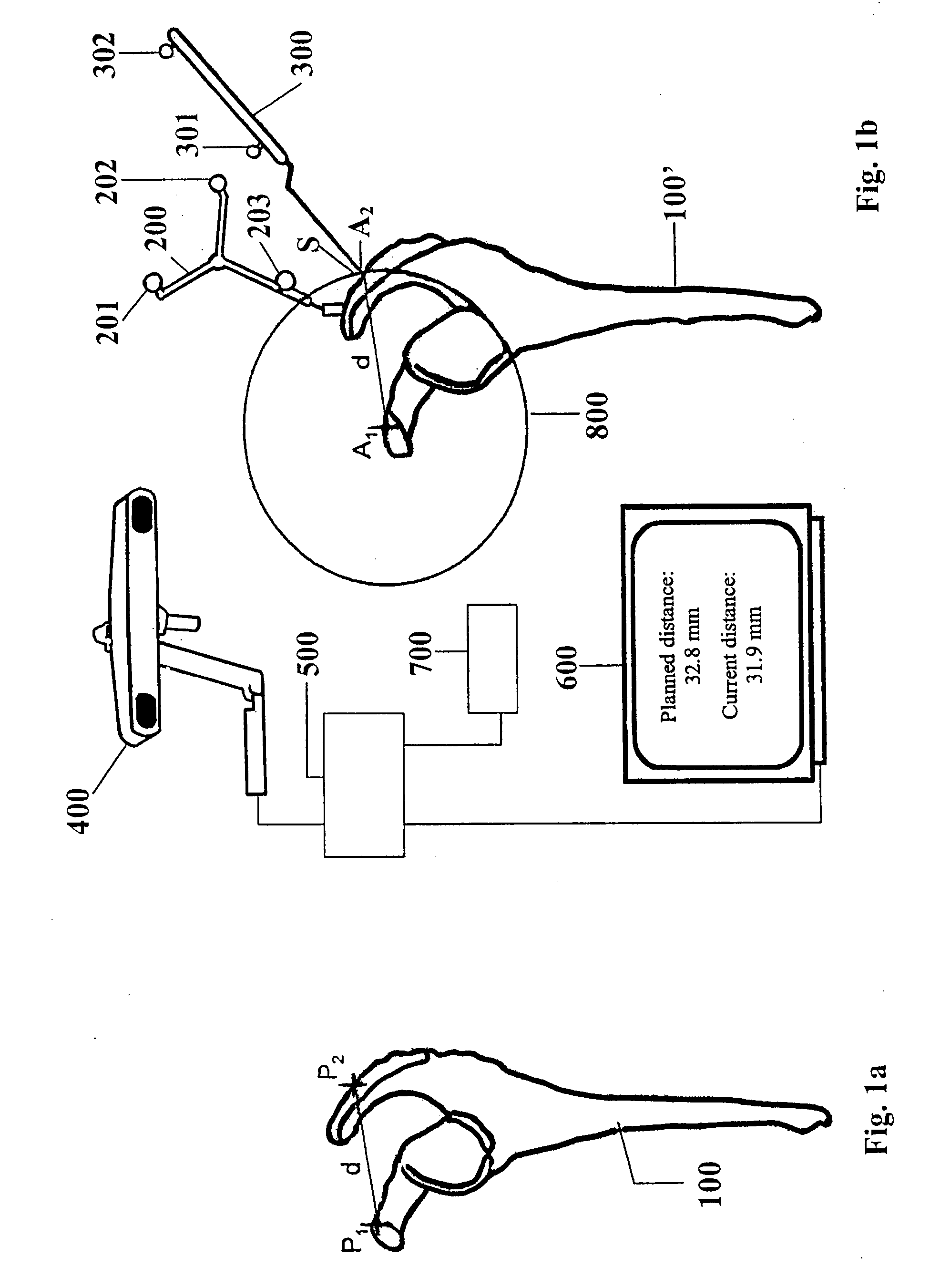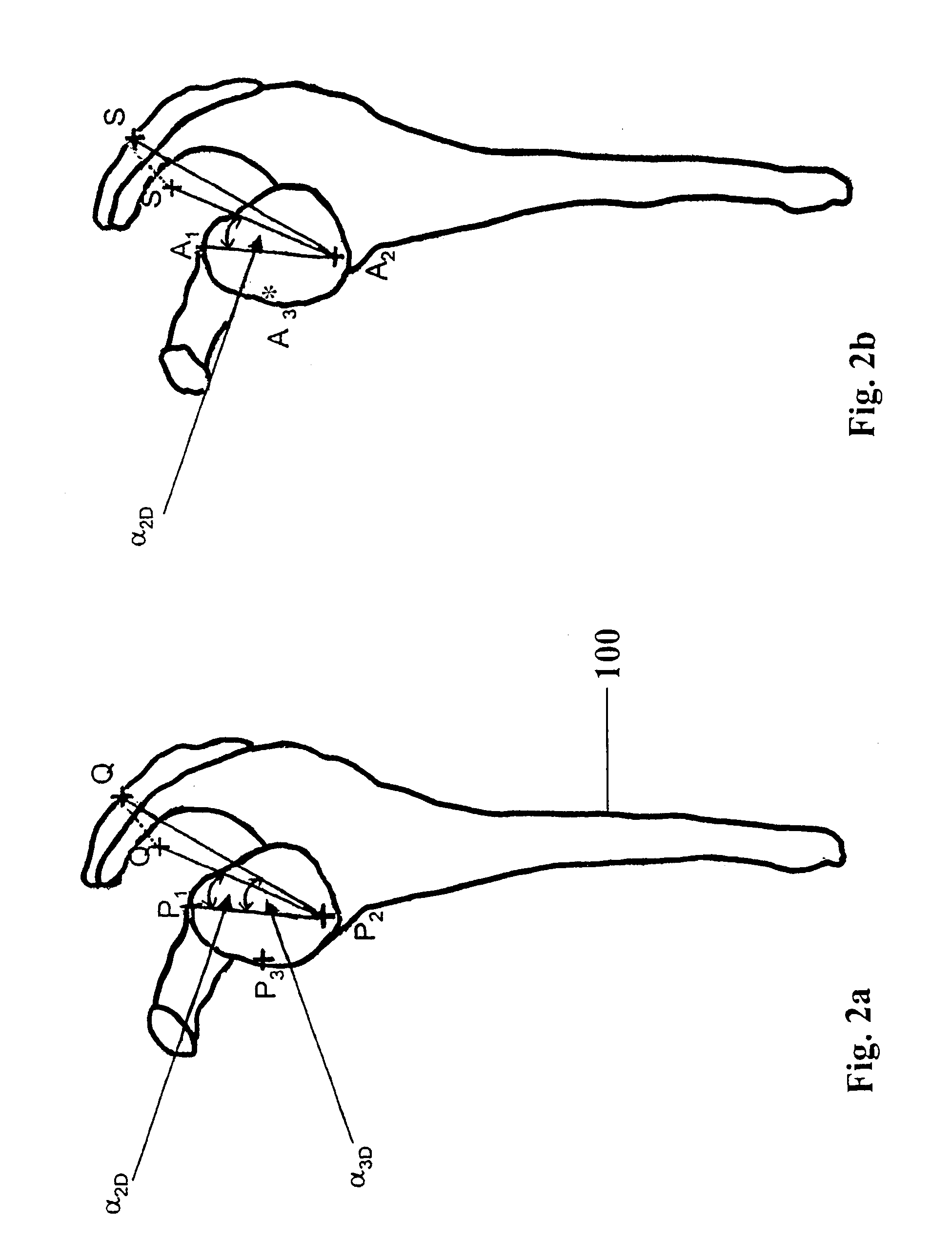Determining correspondence object pairs for medical navigation
- Summary
- Abstract
- Description
- Claims
- Application Information
AI Technical Summary
Benefits of technology
Problems solved by technology
Method used
Image
Examples
Embodiment Construction
[0054]In the following exemplary embodiment, it is assumed that CT data is available as virtual data of the body structure and it is assumed that first and second landmarks have already been planned (e.g., defined in the virtual space based on the CT data). These first and second landmarks P1 and P2 are shown in FIG. 1a and are spaced by a line “d”. Since CT-based registration is a rigid registration, the distances (for example, the relative distance relationships) are maintained. The distances between the landmarks on the actual body structure, which may be determined intra-operatively, should be the same for the corresponding landmarks. A virtual body structure 100 in FIG. 1a corresponds to an actual body structure 100′ in FIG. 1b. A marker device 200 (e.g., a reference star) is attached to the actual body structure 100′ and is provided with markers (e.g., marker spheres) 201, 202 and 203 that may have predetermined positional relationships to each other. A pointer 300, that likew...
PUM
 Login to View More
Login to View More Abstract
Description
Claims
Application Information
 Login to View More
Login to View More - R&D
- Intellectual Property
- Life Sciences
- Materials
- Tech Scout
- Unparalleled Data Quality
- Higher Quality Content
- 60% Fewer Hallucinations
Browse by: Latest US Patents, China's latest patents, Technical Efficacy Thesaurus, Application Domain, Technology Topic, Popular Technical Reports.
© 2025 PatSnap. All rights reserved.Legal|Privacy policy|Modern Slavery Act Transparency Statement|Sitemap|About US| Contact US: help@patsnap.com



